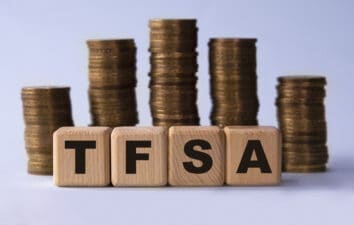According to WealthSimple, the average CPP and OAS combined amount is $1,608 per month. That breaks down to
- $689 (the average CPP amount)
- $615 in OAS
- $304 in GIS (a tax-free top up to OAS for low-income seniors)
These figures vary a lot from retiree to retiree. If you aren’t eligible for the GIS, the amount immediately reduces to $1,304. If you max out your CPP, you may get up to $1,200 a month from CPP alone (or $2,119 total). However you slice it, it’s not a lot of money. In this article, I’ll explore why that’s the case and propose some solutions.
What $1,608 a month buys you
The main reason why most retirees can’t live on $1,608 in CPP and OAS a month is simple:
- CPP and OAS are taxable.
- Even the pre-tax amount doesn’t cover rent in many Canadian cities.
According to Rentals.ca, the average rent in Canada is $1,675 a month. The pre-tax amount of CPP and OAS doesn’t cover that. Of course, some cities are cheaper than others, and the national average is skewed up by the massive number of homes in Toronto and Vancouver. But the point stands: you won’t be able to rent the average Canadian apartment on $1,608 a month. Even on a pre-tax basis, it just doesn’t cover the cost.
The matter gets even stickier when we consider grocery costs. Inflation has been a big concern lately, and some food products (like corn) have been among the biggest risers. The more expensive groceries get, the bigger a retiree’s monthly expenses get. And while CPP is inflation-indexed, it doesn’t necessarily rise specifically in proportion to rent and grocery inflation. Instead, it goes off the whole CPI, which includes rent and groceries as well as things like booze and “recreation.”
The importance of saving
All of the points raised so far lead to one inevitable conclusion: to retire in comfort, you have to save money.
Unless you have a very generous employer pension plan, you won’t get enough pension money to live off of, most likely. But if you save $500,000 over the course of your life, you could stand a fighting chance.
If you took $500,000 and invested it in iShares S&P/TSX 60 Index Fund (TSX:XIU), you’d get back $12,500 in dividends every year. You’ll get more if the companies that made up the fund increased their dividends. Over a long-enough timeframe, that does tend to happen, as companies grow and become more profitable. By investing in ETFs like XIU, you can build a “self-made pension” that adds to your CPP and OAS money. $12,500 a year isn’t a lot on its own, but if you add it to $19,000 a year in CPP and OAS, it could give you a shot at a decent retirement. ETFs like XIU charge a small fee in exchange for giving you a ready-made investment portfolio you do not actively manage. For retirees, such funds are among the best investments out there. And every retiree should have something more than CPP and OAS in their golden years.








